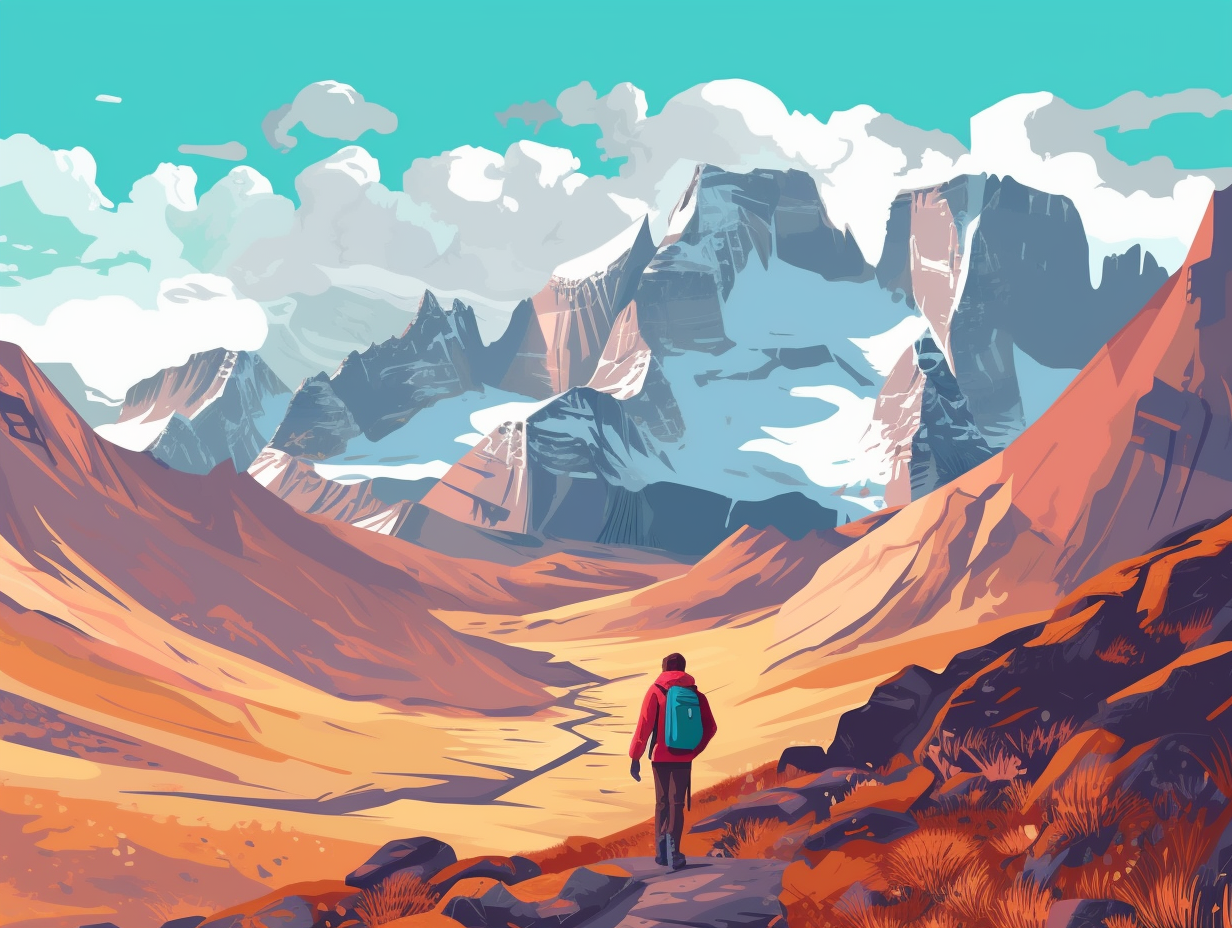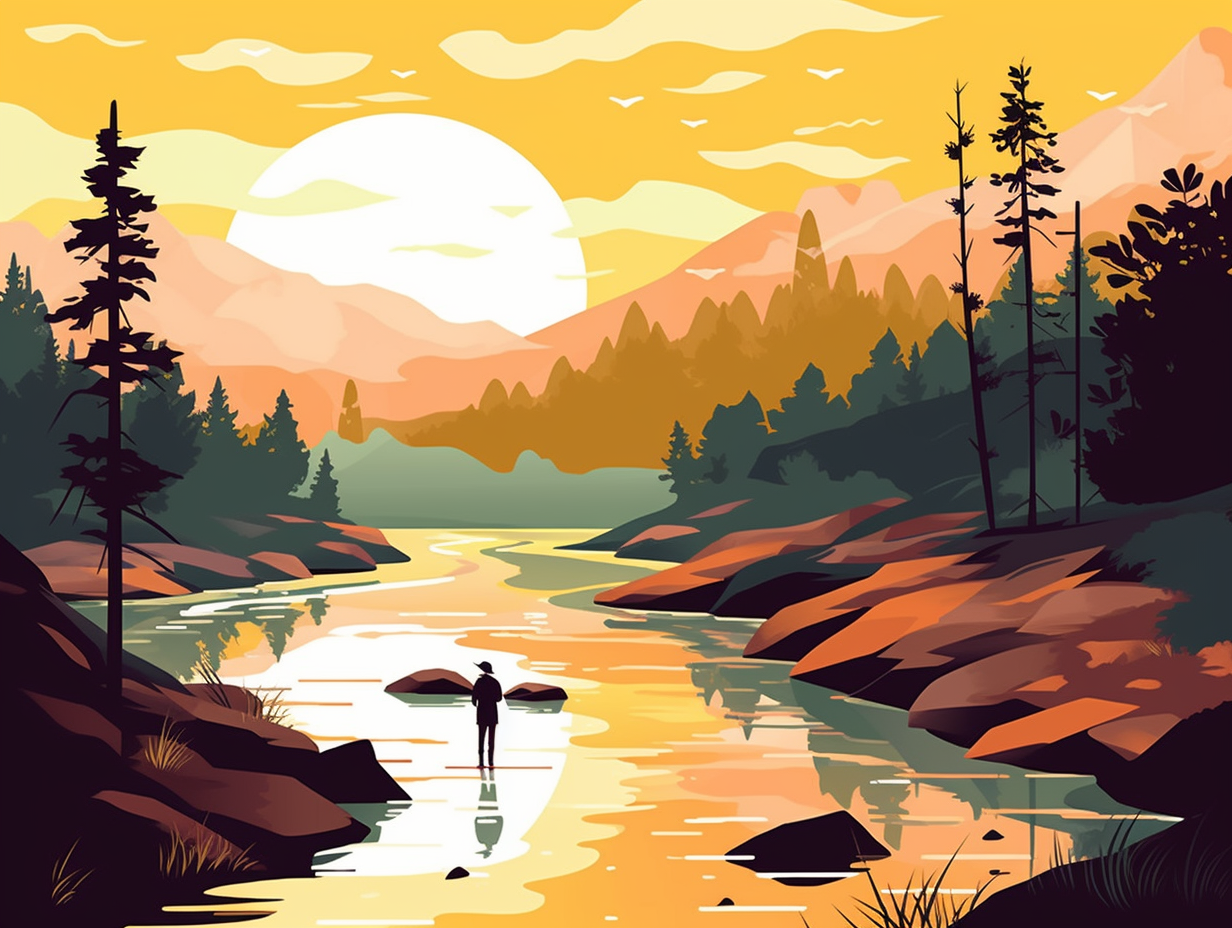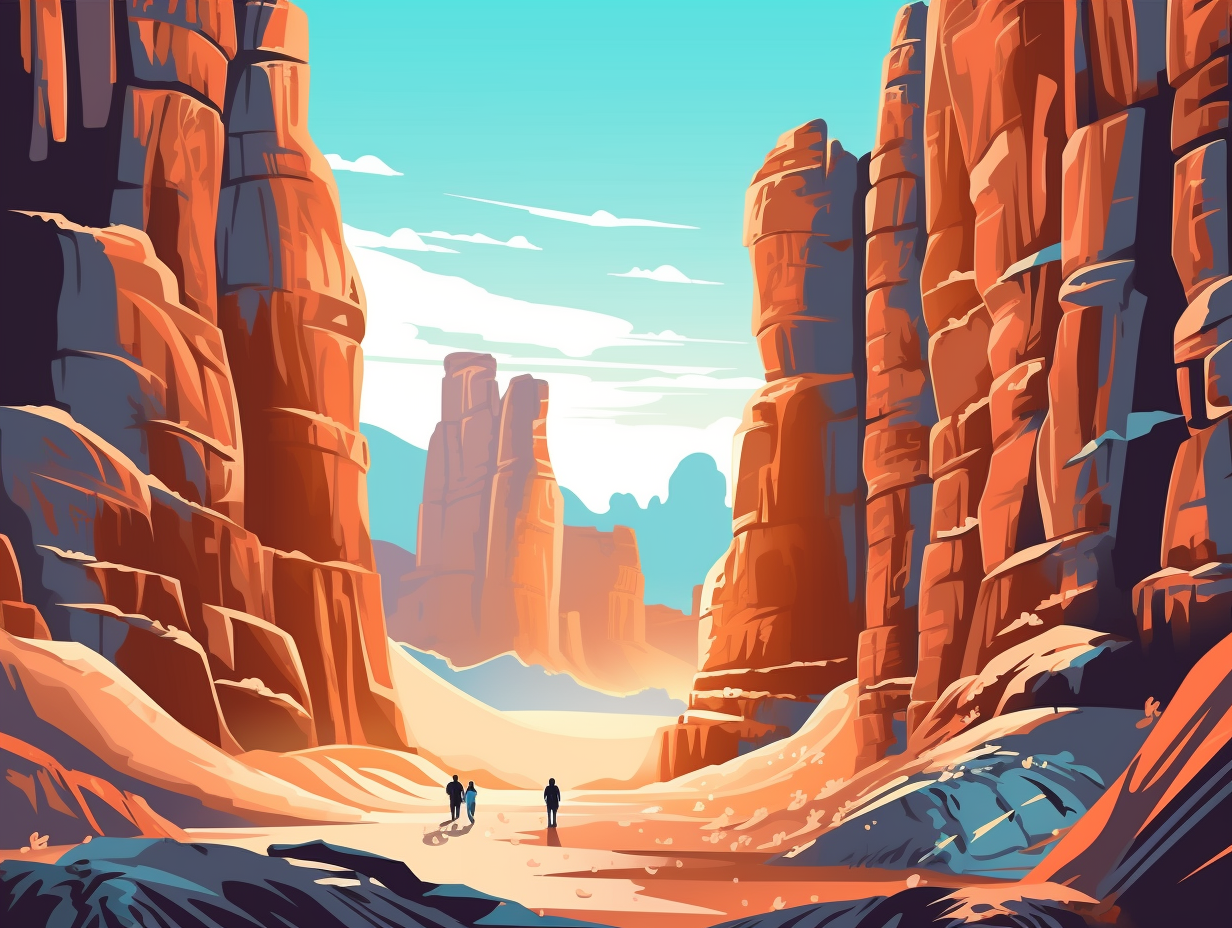Summit to Smile About: 21 Fascinating and Fun Facts About Mountains You'll Love!

1. Mount Everest's Growth Spurt
In a race to the sky that would make skyscrapers blush, the Himalayas are constantly pushing the envelope of Earth's vertical limits: The peak of Mount Everest, standing tall at 8,848 meters, increases its height by around 5 millimeters each year as India and Eurasia play an epic game of geological tag, with tectonic forces and ongoing landmass pressure fueling this breathtaking natural Phenomenon.
Source => pubs.usgs.gov
2. Andes: The Ultimate Mountain Range
Move over, Marvel superheroes, because there's a towering titan that's been dominating Earth's skyline far longer than you have: The Andes Mountains not only claim the highest peak outside of Asia, with Argentina's Mount Aconcagua rising to a dizzying 6,961 meters (22,838 feet), but they also host the world's highest volcanoes and stretch a whopping 8,900 kilometers (5,530 miles) long, making them the most extended single-continent mountain range in existence.
Source => en.wikipedia.org

Did you know that the air pressure on Mount Everest's peak is only a third of what we breathe at sea level? Climbers must use supplemental oxygen to conquer the summit! 🏔️💨 Discover more intriguing details...
=> Fun Facts about Mount-Everest
3. Himalayas: Spiritual Skyscrapers
Who needs elevators when you have the Himalayas? This colossal stairmaster in Mother Nature’s backyard not only hosts the world's most elevating peaks, but also lends itself to some mystical mountain worship: Boasting over 100 peaks exceeding 7,200 meters in elevation, including the majestic Mount Everest at 8,848.86 meters, the Himalayan Range is both intensely spiritual, with summits like Cho Oyu, Everest, Gangkhar Puensum, Lhotse, and Makalu revered in Hinduism, Jainism, and Buddhism, and a life-sustaining force as the origin of major rivers such as the Indus, Ganges, and Tsangpo–Brahmaputra, which collectively nurture about 600 million people in their drainage basin.
Source => en.wikipedia.org
4. Kilimanjaro's Climate Hopscotch
Ever wanted to be a climate hopscotch champion? Pack your bags and head to Mount Kilimanjaro: this Tanzanian giant is home to five distinct climate zones, each with its own ecosystem, allowing you to stroll through varied vegetation and mingle with singular animal life, as you conquer one zone after another from the Cultivation Zone to the Arctic Summit. Let the climate games begin!
Source => climbing-kilimanjaro.com

5. Mount Everest's Height FOMO
You might say Mount Everest has a serious case of FOMO, wanting to be taller every year like a desperate wannabe at the high peaks party: Mount Everest grows by 4mm per year, thanks to the ambitious tango between the Indo-Australian Plate and the Eurasian Plate, making it one of the fastest growing mountain peaks with the entire Himalayas mountain range growing at a rate of 7mm per year.
Source => scienceline.ucsb.edu
6. Iran's Mountainous VIP Party
Who would have thought that mountain peaks could be such social butterflies―flaunting a guest list full of exclusive, endemic species: Iran's high mountain ranges, specifically, are hotspots of biodiversity, home to a treasure trove of unique species found nowhere else on Earth and especially at mid-elevations, but current climate change and uninvited human activities like overgrazing threaten to crash the party.
Source => nature.com
7. Everest: A Cosmic Peek-a-Boo
Talk about a room with a view, minus the room: Mt. Everest's majestic height of 29,032 feet makes it visible from the International Space Station, a fact confirmed by NASA astronaut Mark Vande Hei who shared a stunning photo on Twitter. But don't expect the naked eye to catch this sight from outer space – it requires specialized equipment to enjoy this peak's space-based peak-a-boo!
Source => thehill.com
8. The Alpine Tectonic Tango
When the Earth played a game of "tectonic tag", the Alps were born: Formed from the collision between the African and Eurasian tectonic plates, they folded and thrusted to create spectacular peaks like Mont Blanc, Matterhorn, and other high mountain ranges throughout the Pennine Alps and Hohe Tauern.
Source => en.wikipedia.org
9. Olympus Mons: The Martian Marvel
If Italy and a giant Martian volcano played a game of "Who Wore It Better," they'd be tied for size, while Olympus Mons would steal the show with its jaw-dropping youthfulness: Olympus Mons, the tallest mountain in our solar system, spanning around 300,000 km2 (roughly the size of Italy) is the youngest amongst large volcanoes on Mars. Boasting a 26 km elevation and an atmospheric pressure that's 12% of the Martian average, Olympus Mons is so exclusive, even clouds need a VIP pass to float over its summit.
Source => en.wikipedia.org

10. Antarctica's Hidden Mountain Gems
In an icy game of hide and seek that would make even Elsa from Frozen jealous, a mountain range in Antarctica managed to stay incognito beneath a thick blanket of snow: The Gamburtsev Mountain Range, discovered during the 2009 AGAP project, boasts jagged peaks similar to the European Alps and formed a billion years ago when two plates joined forces to create the super-continent, Rodinia.
Source => en.wikipedia.org
11. Transantarctic Mountains: Earth's Tug-of-War
Hold onto your ice picks, because this frosty fact is about to rock your glaciers: The Transantarctic Mountains are the largest noncontractional mountain belt on Earth, formed by a flexural uplift during the Eocene epoch, causing the lithosphere to crack, giving us an escarpment that accelerates erosion and exhumation - all thanks to East and West Antarctica playing a game of tectonic tug-of-war!
Source => researchgate.net
12. K2: Leo's Winter Wonderland
Ever heard of a mountain that's so frigid, climbing it during winter months is more elusive than Leonardo DiCaprio trying to win an Oscar (before 2016, of course)? We present K2 for your wintry giggles: nestled in the Karakoram Range, K2 is regarded as one of the most dangerous mountains in the world, with a mere three winter expeditions attempted – all of which failed – yet successfully scaled a total of 367 times in other seasons.
Source => explorersweb.com
13. Wind Slabs: Mother Nature's Sneeze Guard
Mother Nature's sneeze guards: those wacky wind slabs on mountains are the resultat of Earth having a bit of a nasal whoosh party! But seriously, folks: these slabs can range from soft to hard and form in predictable locations like below the leeward side of ridges or in crossloaded gullies, sometimes even sounding hollow. To avoid encountering these precarious party-poopers, it's wise to stick to sheltered or wind-scoured areas and be alert for signs such as blowing snow or cracking and collapsing snow.
Source => avalanche.org
14. Meteorology Meets Mountains
When Mother Nature has a bad hair day, mountains take a wave check: Mountains host their own unique climate patterns and weather effects that can make flying a drone a tricky affair. The meteoblue climate diagrams provide detailed information on hourly weather simulations for different mountain locations, such as the Matterhorn, helping adventurers plan the best conditions for aerial photography or other activities while accounting for wind, cloud cover, and precipitation.
Source => meteoblue.com

15. Rocky Mountains: The Mining Matchmakers
If the Rocky Mountains had a dating profile, it would boast of its "rich" personality and irresistible attraction for miners: Home to a diverse range of mineral resources, this alluring natural wonder has offered silver, copper, lead, zinc, uranium, gypsum, and coal to eager hearts and hands for centuries, ranging from indigenous communities to European explorers.
Source => earthathome.org
16. Andean Snow Angels
Move over, Frosty the Snowman: the Andes have their own chilly trio with a frosty past! These three Inca "snow angels" were found perched at a dizzying 6,739 meters (22,110 feet) up the Llullaillaco Mountain in 1999, making their discovery one of the highest-altitude archaeological sites in the world.
Source => en.wikipedia.org
17. Tibetan Plateau: The Geology World's Rooftop Party
If things are looking a bit "plateaued" in your life, there's no better place to break that deadlock than the rooftop party of the geology world: The Tibetan Plateau, also called the "Roof of the World," is Earth's highest and largest plateau, covering an area about four times the size of Texas and boasting an average elevation of over 4,500 meters (14,764 feet). This mountainous marvel's ridges were sculpted by tectonic forces, giving birth to deep, glacier-fed lakes like Migriggyangzham and Dorsoidong.
Source => usgs.gov
18. Gravity-Defying Mountain Gurus
Guess what's got gravity itself playing favorites? Mountains! That's right, these towering titans of the Earth aren't just good for picturesque landscapes, they're actually part-time manipulators of gravity: Mountains can cause a smaller gravitational acceleration downward due to their presence, which means terrain corrections must be made to account for their mass. Calculating these corrections involves estimating the mountain's volume and average density – talk about a mountain-sized equation!
Source => pburnley.faculty.unlv.edu
19. Buckskin Mountain: The Golden Jackpot
If mountains could play the lottery, Buckskin Mountain in Nevada would be the ultimate gold digger: It's a generous treasure trove of gold, silver, and other precious metals, all thanks to its ancient, 15.6-million-year-old veins formed by rhyolite intrusion and accompanying hydrothermal sulfides and silicates.
Source => pubs.geoscienceworld.org
20. Mountains: Earth's Natural Storytellers
If mountains could talk, they'd be the life of the party with loads of stories about how they harbor secret lives only seen by the most intrepid explorers: mountains cover 24% of Earth's total land surface, making them home to a staggering amount of the planet's biodiversity that includes numerous rare and endangered species found nowhere else.
Source => zo.utexas.edu
21. Mount Chimborazo: Unofficial Launchpad to Space
Ever feel like you're on top of the world and a hop, skip, and a cosmic leap away from reaching outer space? Well, it's not just the altitude confusing your brain cells: Mount Chimborazo in Ecuador is not the tallest mountain on Earth, but its summit is the farthest point on the Earth's surface from its center due to the planet's oblate spheroid shape – meaning you are technically the closest human to space while standing atop its peak at 6,263 m (20,548 ft).
Source => en.wikipedia.org
Related Fun Facts




















